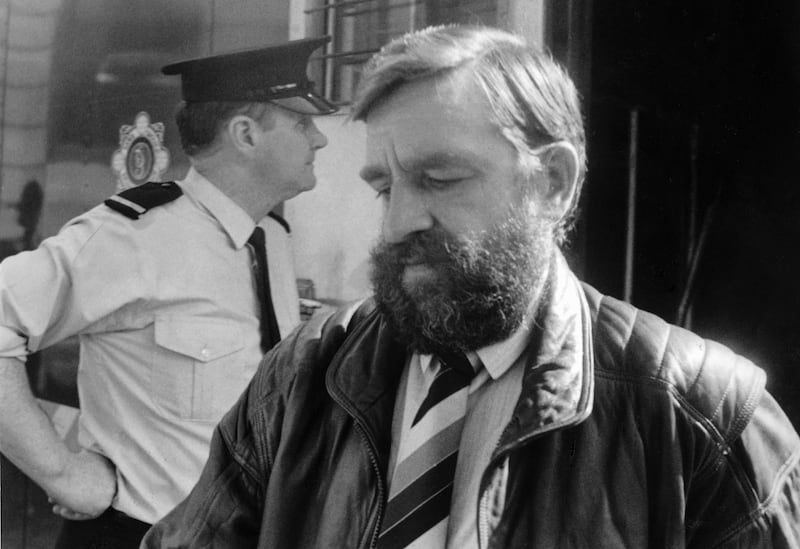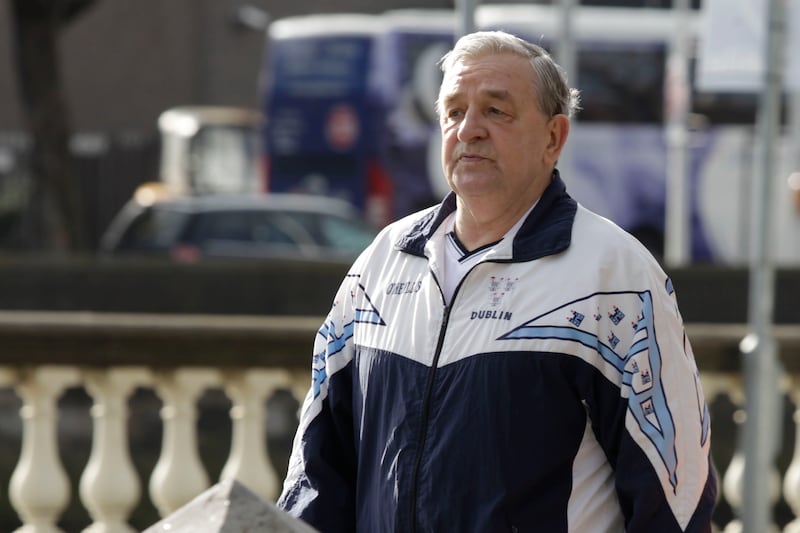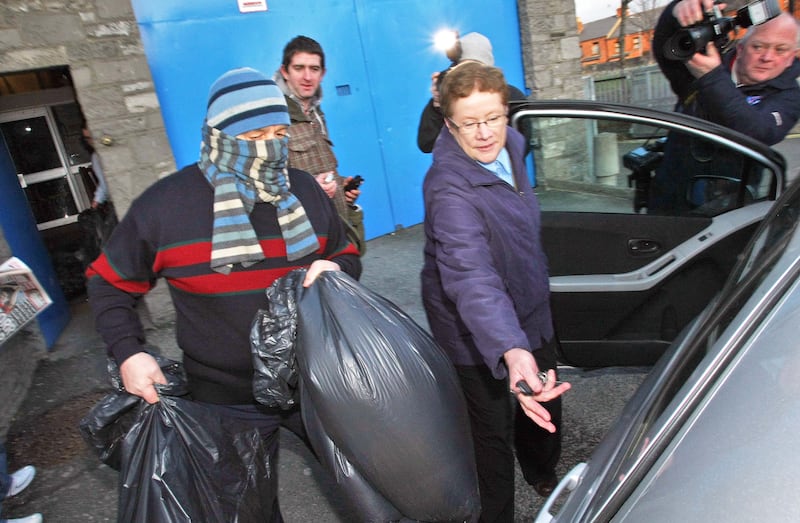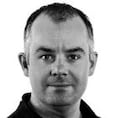Tony Felloni grew up in tough neighbourhoods of inner city Dublin in the 1950s – streets he would later play a central role in flooding with heroin. Decades on, the aftershocks of his actions are still felt.
A married father of seven (including one with a mistress), Felloni was perhaps the most notorious of the first wave of senior drug dealers to emerge in Dublin.
Long before his involvement in drugs, he had convictions for running prostitution and beating his wife as well as the usual litany of offences on the records of most career criminals: burglary, robbery and assault.
What made Felloni different was that he involved most of his children in his drugs business. They eventually became addicted to the heroin he sold, earning him the nickname “King Scum”.
Felloni died on Monday in a Dublin hospital aged 81. He was a former heroin addict who contracted HIV through his intravenous drug use. He was released from a 20-year prison sentence in 2011 and, though reportedly at death’s door when freed, he defied the odds and lived much longer than anyone expected.
At the peak of his drugs business peddling heroin in the inner city in the 1980s and 1990s, Felloni led a chaotic syndicate of people, which included his children, who sourced heroin from the UK, smuggled it by car ferry into Dublin and sold it on the streets of the capital. He was jailed for two lengthy periods for heroin dealing; the first sentence was for 10 years in 1986 and the second a 20-year stretch in 1996.

Two weeks after he was sentenced in 1996, crime journalist Veronica Guerin was shot dead by the John Gilligan-led Dublin drugs gang. The last article Guerin ever wrote for her newspaper, The Sunday Independent, was an interview with Felloni’s wife, Anne.
“I was only out of prison myself. I had done a sentence in England for shoplifting,” she told Guerin of first meeting her future husband after he was freed in 1966 from a three-year sentence for keeping brothels.
“I remember meeting Tony in O’Connell Street; he was still dressed in a three-piece suit he got leaving prison. He was vicious with drink and often knocked me about but then he’d be full of remorse,” she said.
The attacks included being hit with a hatchet while pregnant; the wound required about 300 stitches down the years.
“He’s f***ed up every one of his own kids so he doesn’t give a shite about anyone,” she said.
[ Felloni family history paints gruesome picture (1996)Opens in new window ]
Born Anthony Carroll in 1943, Felloni was originally from Dominick Street Lower. Unlike other drug dealers who bought large homes in the countryside, he never strayed out of the north inner city for long. He was given his mother’s name at birth because his parents were not married. However, he was known by his father’s name, Felloni, and changed it officially in 1969 when he married Anne, also a former heroin addict.
Before he married, he would seduce women working as domestic staff in large houses in Dublin. He would develop relationships with the women – often very young and recently arrived in Dublin from rural Ireland – before taking compromising photographs of them. He then demanded half of their wages each week under threat of showing the images to their employers.
Garda sources said by the 1980s Felloni could see the money being made by the Dunne family, led by kingpin Larry Dunne, in the heroin trade and decided he would make his move into it. Heroin was flooding into Europe at the time as a result of the drug being smuggled out of Afghanistan when the Russians invaded in 1979.

The Garda at the time was ill-prepared for the heroin epidemic as it was mainly preoccupied with combating the activities of the Provisional IRA, both its terrorism and its fundraising primarily through bank robberies and abductions in the Republic.
In the late 1970s and early 1980s, Felloni spent a brief period in Britain. He was arrested in Surrey in 1981 and jailed for four years for conspiracy to import heroin. On his release he returned to Ireland and quickly became well established in the heroin trade. He imported heroin from Britain and often buried it at two sites in Dublin: on waste ground near Glasnevin cemetery and in a field in Kinsealy in north Dublin.
He sent his lower-ranking gang members to dig up the drugs as required. Though a number of them were caught, Felloni was harder to capture. He was eventually caught in the summer of 1984 in a safe house in Ballymun with a consignment of drugs that had just been smuggled into Dublin from the UK.
When gardaí burst through the patio doors and front doors at the same time, Felloni was weighing heroin on a scales in the kitchen. Michael O’Sullivan was then a young detective involved in that operation, and would later become head of the Garda’s drug squad and an assistant commissioner.
O’Sullivan said Felloni was caught red-handed after insisting on weighing and cutting drugs himself as he was “too mean” and too distrustful to use others. He said the Dublin drug dealer was very streetwise but lacked the strategic outlook of other drug dealers such as the Dunnes and Christy Kinahan.
“Once he started using heroin himself, he was messy,” said O’Sullivan “The first word that you would think of when you think of Tony Felloni is sleazy. He was a shifty character and I would say a vindictive and angry sort of a guy, a manipulator. He wouldn’t be very strategic in what he did, but he knew how to make money from crime.”
He says the difference between Felloni and Christy Kinahan, who is behind an international drugs cartel run from Dubai in the Middle East, was that nobody knew Kinahan was “the CEO” of his early Dublin-based drugs operation.
“Tony Felloni was parochial, he hadn’t the wit to get out of the city, get somebody to manage the heroin for him,” said O’Sullivan.

The former assistant commissioner said Felloni stuck to drug-dealing in Dublin’s inner city and “would get withdrawals” if he went over to Dublin’s southside. He may have been greedy, counting out the drugs and money himself but pinning him down was the challenge
“Catching him doing that was a very difficult ball game because he was very streetwise. But he was parochial and insular, he never looked beyond Dorset Street,” he said, referring to one of the northside’s main thoroughfares.
“Was he the number one dealer in Dublin for a period of time? Yes he was. Did he manage that for a second time after prison? Yes he did, because he had a good source in the UK.
“And had he not been on heroin, had he not been so parochial and been a bit cuter, he could have come out of prison and tried to sell the drugs without him being identified, or at least fireproof himself or distance himself [from ever handling drugs] and keep the money.
O’Sullivan said Felloni inflicted huge damage on the people he supplied heroin to, in some cases whole families.
“He was just an absolute mercenary. A lot of the people supplying heroin would know of a circle of people affected by it,” he said.
“But Tony Felloni only had to open his door and look at the mother who had lost her two sons [to heroin] as she made her way to the shops. For Felloni, it was all about Felloni; he just didn’t care. He was heartless.”
- Sign up for push alerts and have the best news, analysis and comment delivered directly to your phone
- Find The Irish Times on WhatsApp and stay up to date
- Listen to our Inside Politics podcast for the best political chat and analysis




















